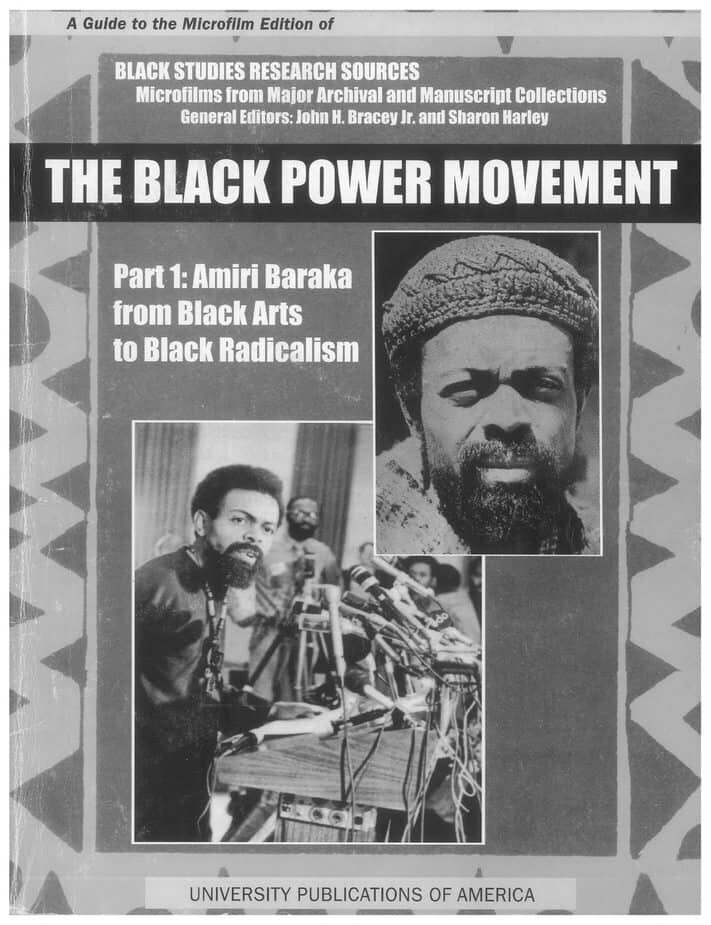“Nationalism is our Direction, Black is our Identity”: Culture and Black Power in Amiri Baraka’s Art
The 1960s was a dynamic decade marked by powerful protests, cultural revivals, and the overall quest for a more inclusive world. One movement that emerged from this sociopolitical environment was Black Power, notorious for its radical call for equality and its embrace of racial pride in and beyond the United States.
The Black Power Movement gained a large following in the late sixties and early seventies, when African Americans were increasingly organizing themselves against the structural racism that shaped their daily lives and experiences. Although the Civil Rights Movement had made considerable progress towards legal justice in previous years, a lot of African Americans felt like they were left empty-handed as everyday discrimination was still prevalent. Therefore, Black Power advocates began to promote a more revolutionary approach to racial equality. Instead of assimilating to white American standards, they proclaimed that justice should be achieved without compromising their identity as those of African descent; they wanted to completely transform the relationship between white and black Americans without having to change who they were.
Although the goal was clear, there was much debate within the Black Power Movement about how equality should be obtained. Different organizations and activists had different visions, which meant that there was a great variety of ideas and practices within the movement. One of the most popular ideas was that of cultural nationalism, a specific form of black nationalism. First popularized by Malcolm X, cultural nationalism suggested that racial pride was the main prerequisite for African American empowerment. Before political changes could be made, it implied, the black mindset needed to be changed. This resulted, among other things, in the ‘Black is Beautiful’ campaign that is still remembered by many as the essence of the Black Power Movement. As US Organization leader Ron Karenga specified: “[culture] gives identity, purpose and direction. It tells you who you are, what you must do, and how you can do it. (…) You cannot have a revolution without direction, and that direction can only come through an ideology developed for your own situation.”
Cultural nationalism was central to the philosophy of Amiri Baraka (1934-2014), an active member and leader of the Black Arts and Black Power movements. Previously known as LeRoi Jones, Baraka was a prominent African American author and poet who published widely on topics of black autonomy and African heritage. He believed that art was “a weapon, a shield, and a pillow of peace” and was therefore vital to black empowerment in the United States. Baraka taught his followers that they could never be truly free unless their souls were liberated from the cultural domination of the white European value system, which he believed to be inherently unfair to those of African descent. A change of morality was thus necessary, but this could only be realized if African Americans underwent a psychological revolution. In his own words, Baraka believed the mind had to be freed “before anything else can happen.”
In his lifetime, Baraka produced over forty literary pieces, including plays, novels, and volumes of poetry. Within his work, he reflects on the many phases of his life: from being raised in the shadow of Jim Crow to being a student at Howard University, and from his time in the United States Air Force to the establishment of the Congress of African People (CAP). White privilege, self-defense, African heritage, and masculinity were recurrent themes in his writing and inspired many others to act politically. Despite the praise he has received for his work and political achievements, critics have also repeatedly criticized him for being outspokenly homophobic, anti-semitic, and misogynistic. Throughout the years, Baraka remained part of a broad global network of black intellectuals, which included influential activists like Walter Rodney, Julius Nyerere, and even Fidel Castro.
The RIAS holds an extensive collection of primary and secondary documents by and about Amiri Baraka, called Amiri Baraka From Black Arts to Black Radicalism. This microfilm collection is part of the University Publications of America series on Black Power. The 9-reel collection on Baraka was edited by historian Komozi Woodard and contains hundreds of documents on – among others – Baraka’s involvement in the Black Arts Movement, Black Nationalism, and Pan-Africanism. According to Woodard, this series is significant because “the ideological and political transformations of Amiri Baraka from a Beat poet in Greenwich Village into a militant political activist in Harlem and Newark was paradigmatic for the Black Revolt of the 1960s.” Woodard’s book A Nation Within a Nation: Amiri Baraka (LeRoi Jones) & Black Power Politics (1999) is also available at the RIAS library.
This article was prepared using the following collection:
– The Black Power Movement
And the following microfilm archive:
– Amiri Baraka From Black Arts to Black Radicalism
And the following book:
– A Nation Within a Nation: Amiri Baraka (LeRoi Jones) & Black Power Politics (1999)



